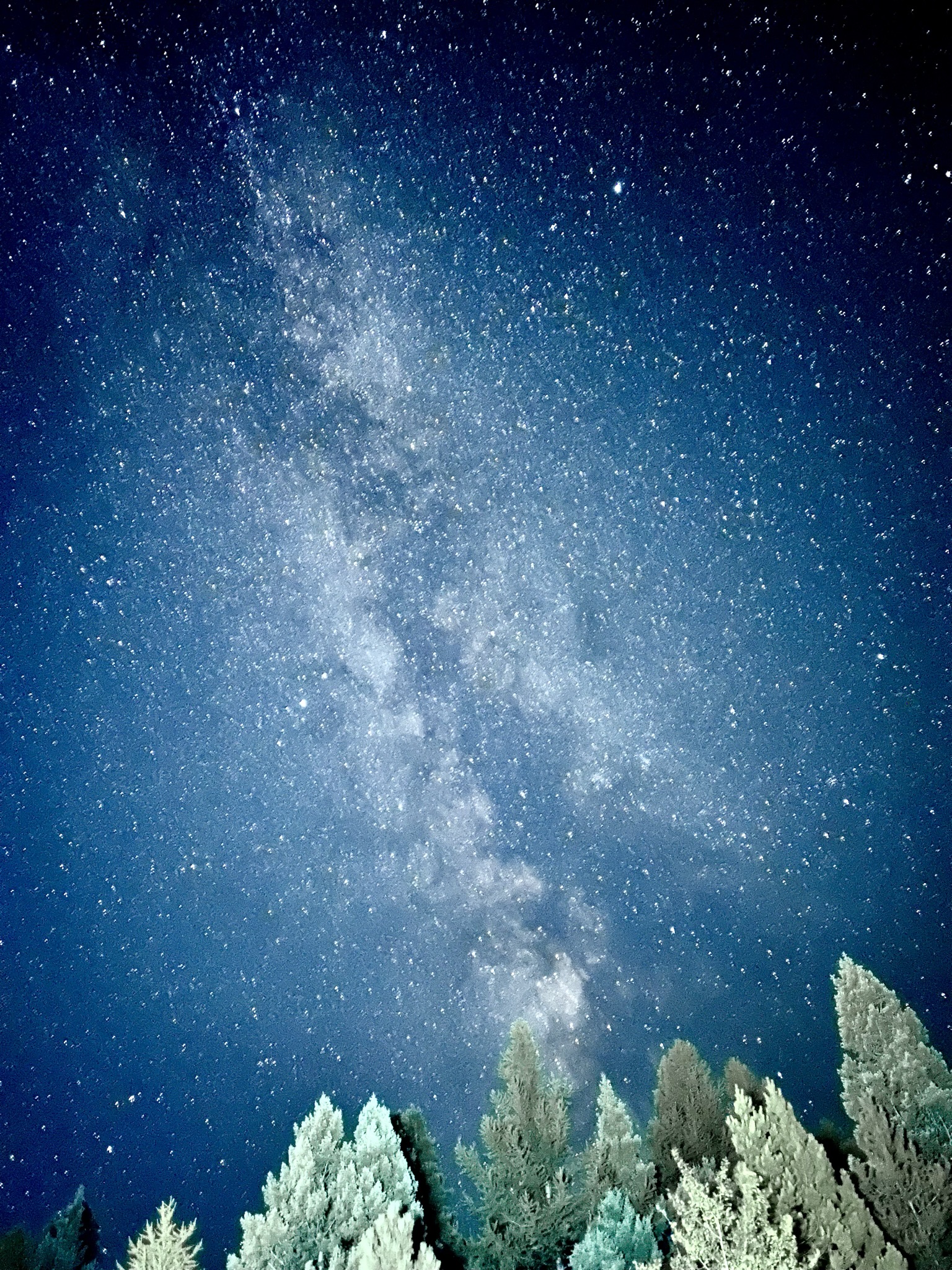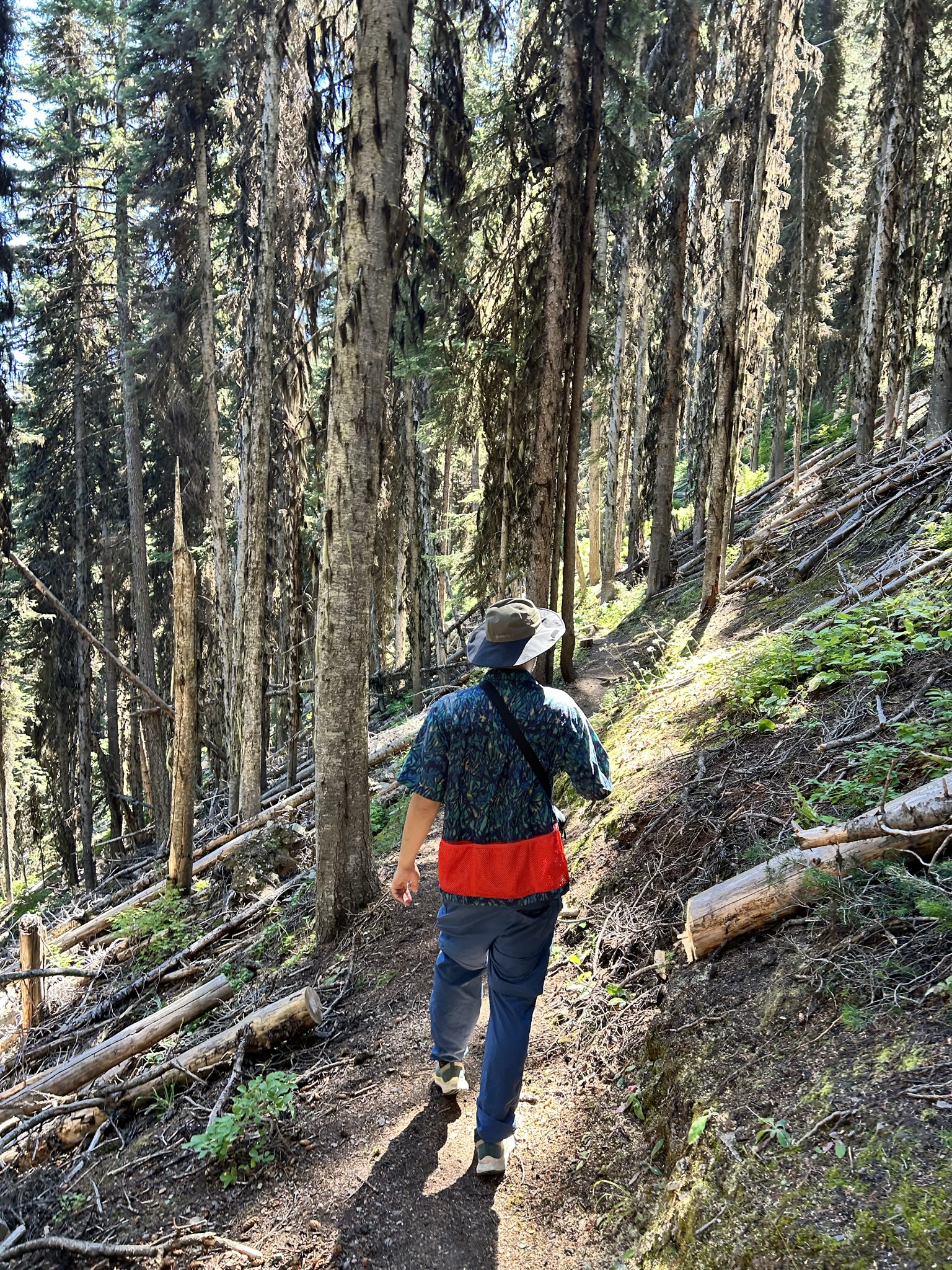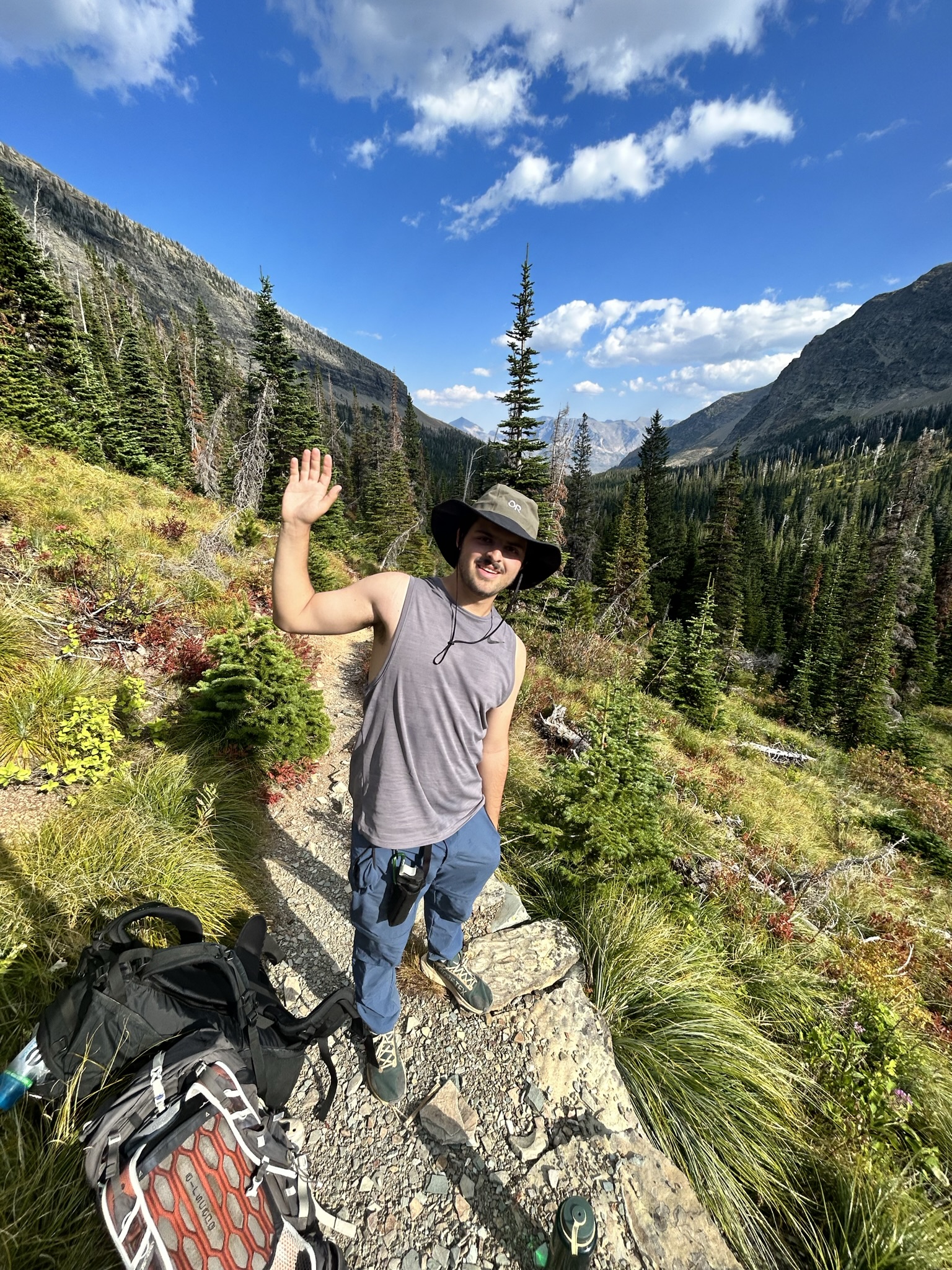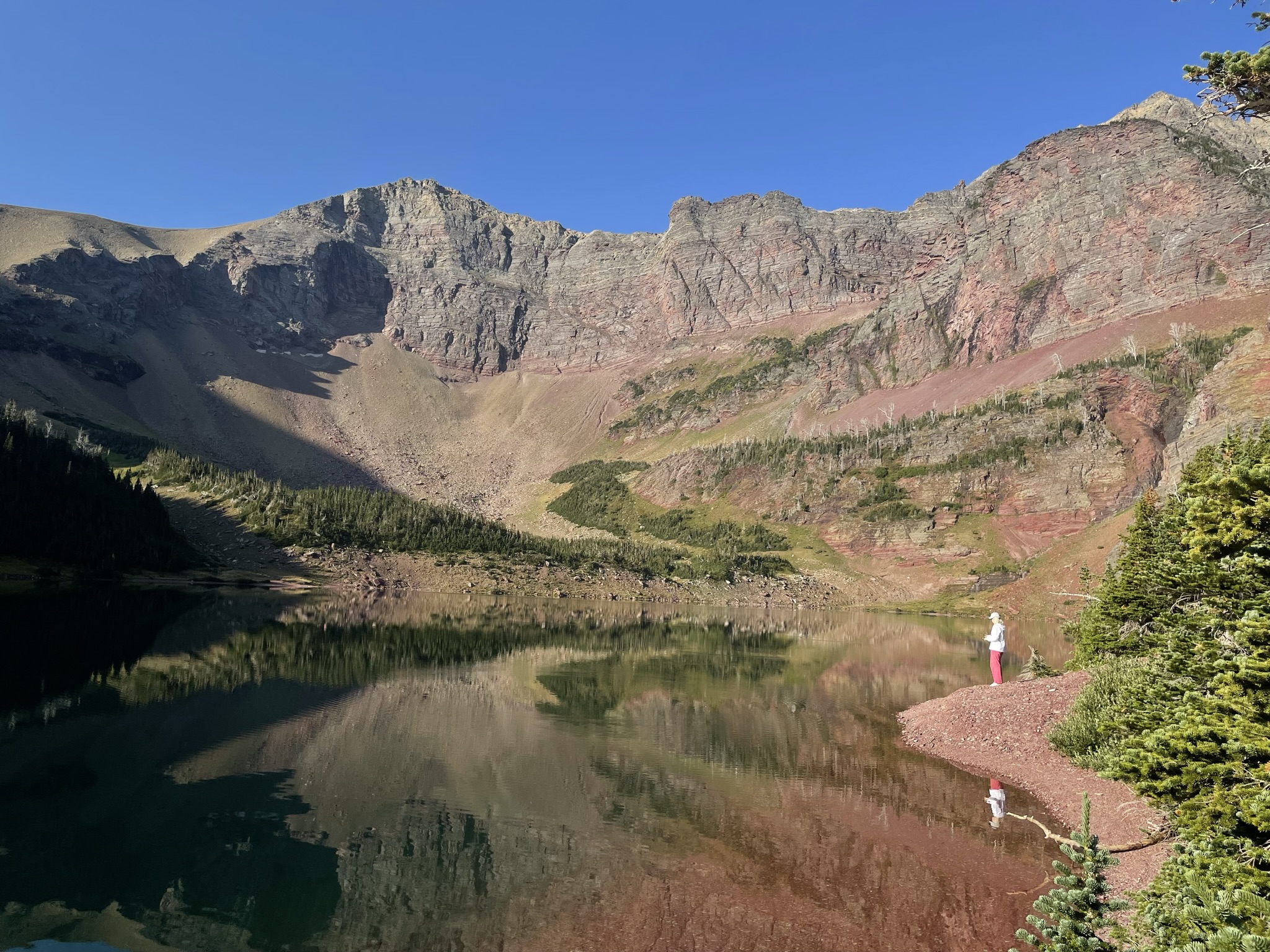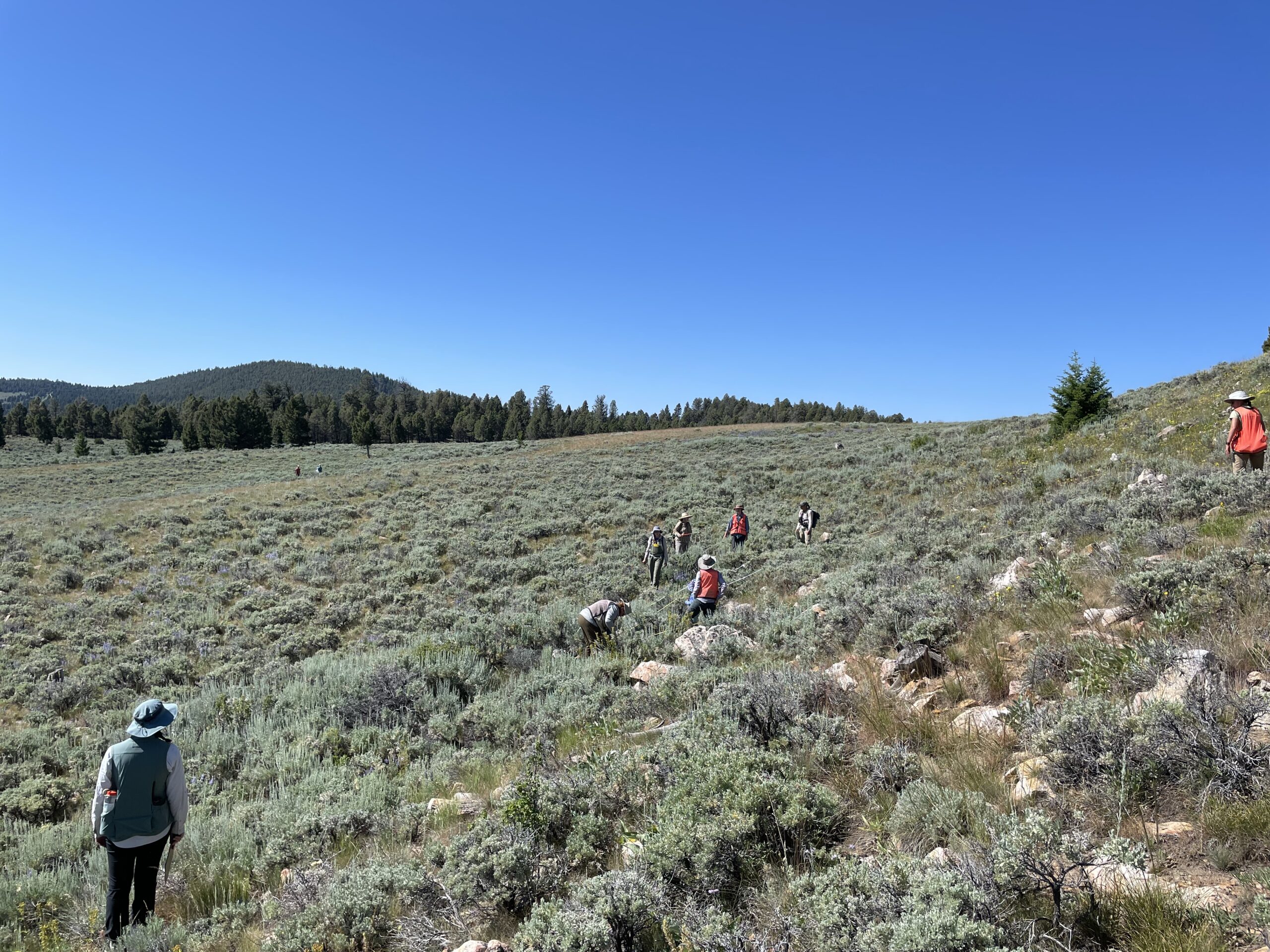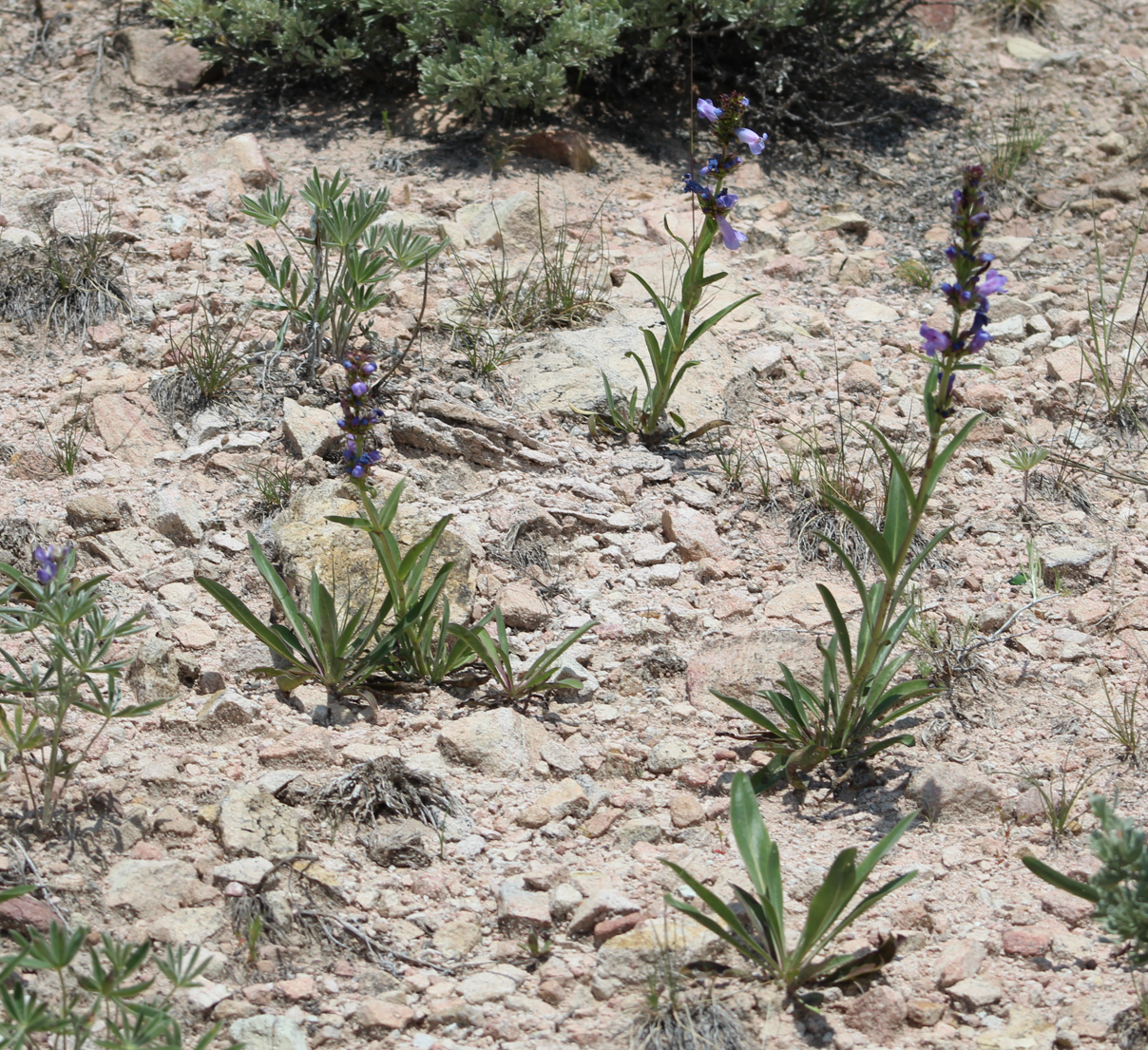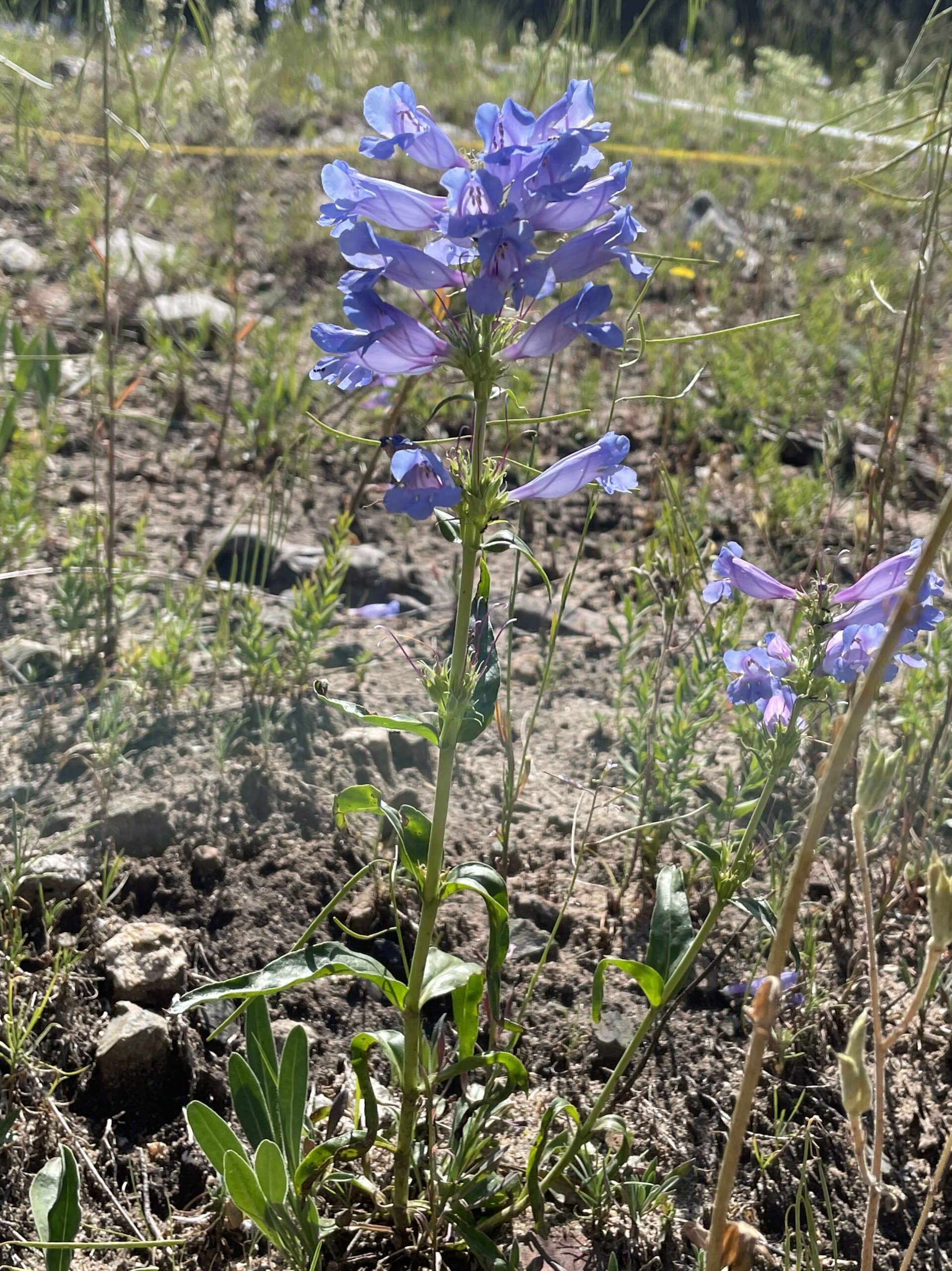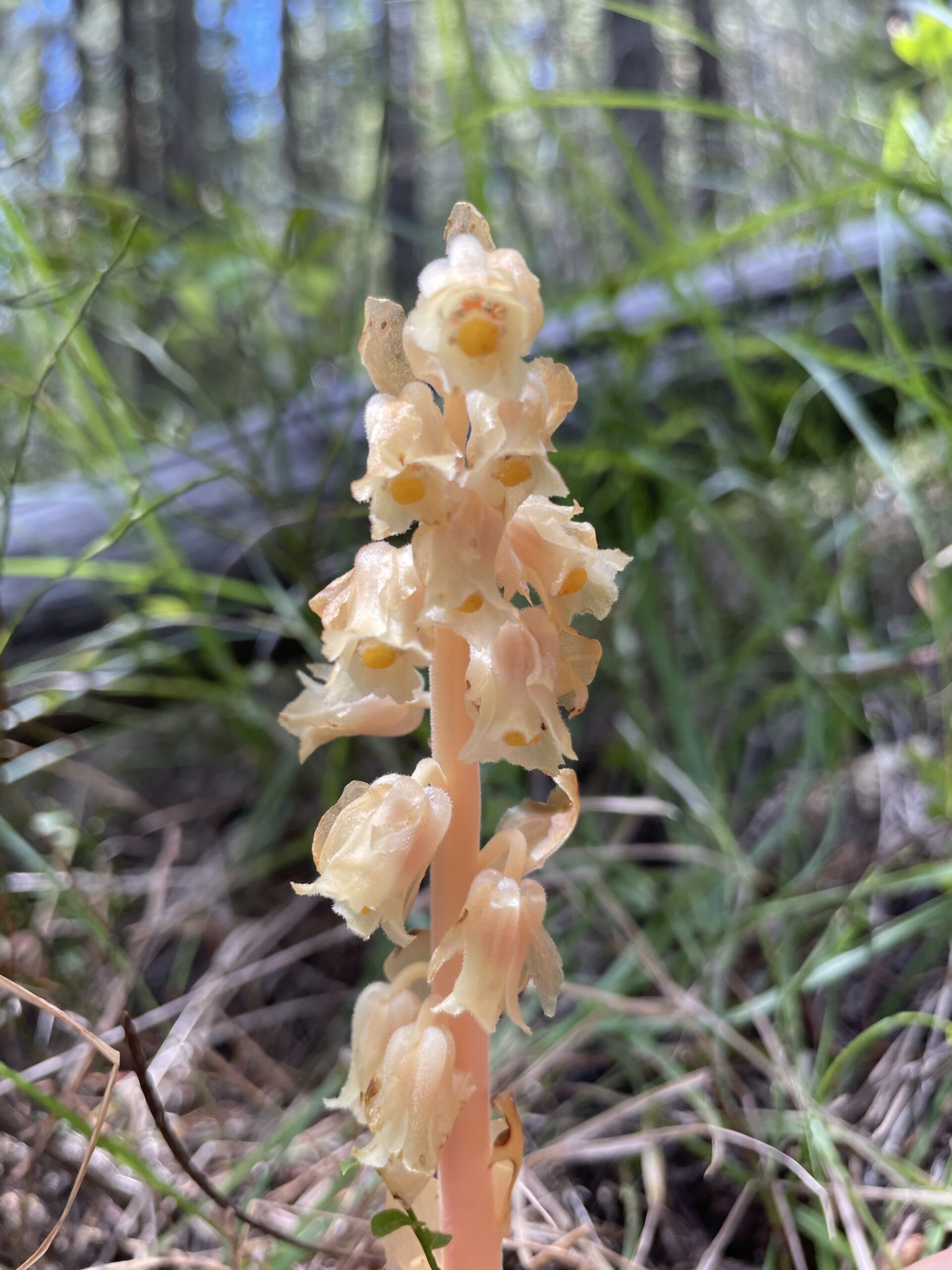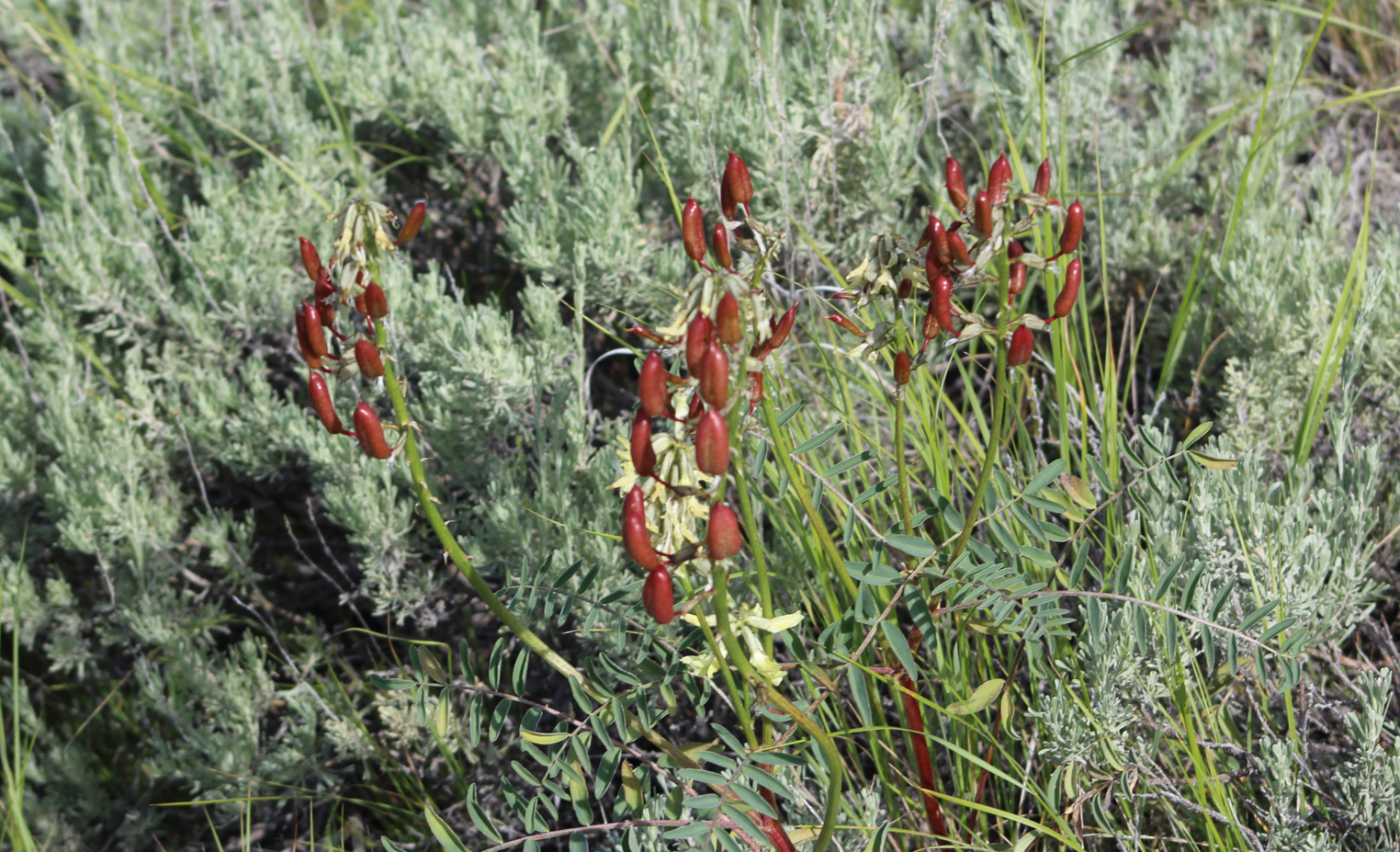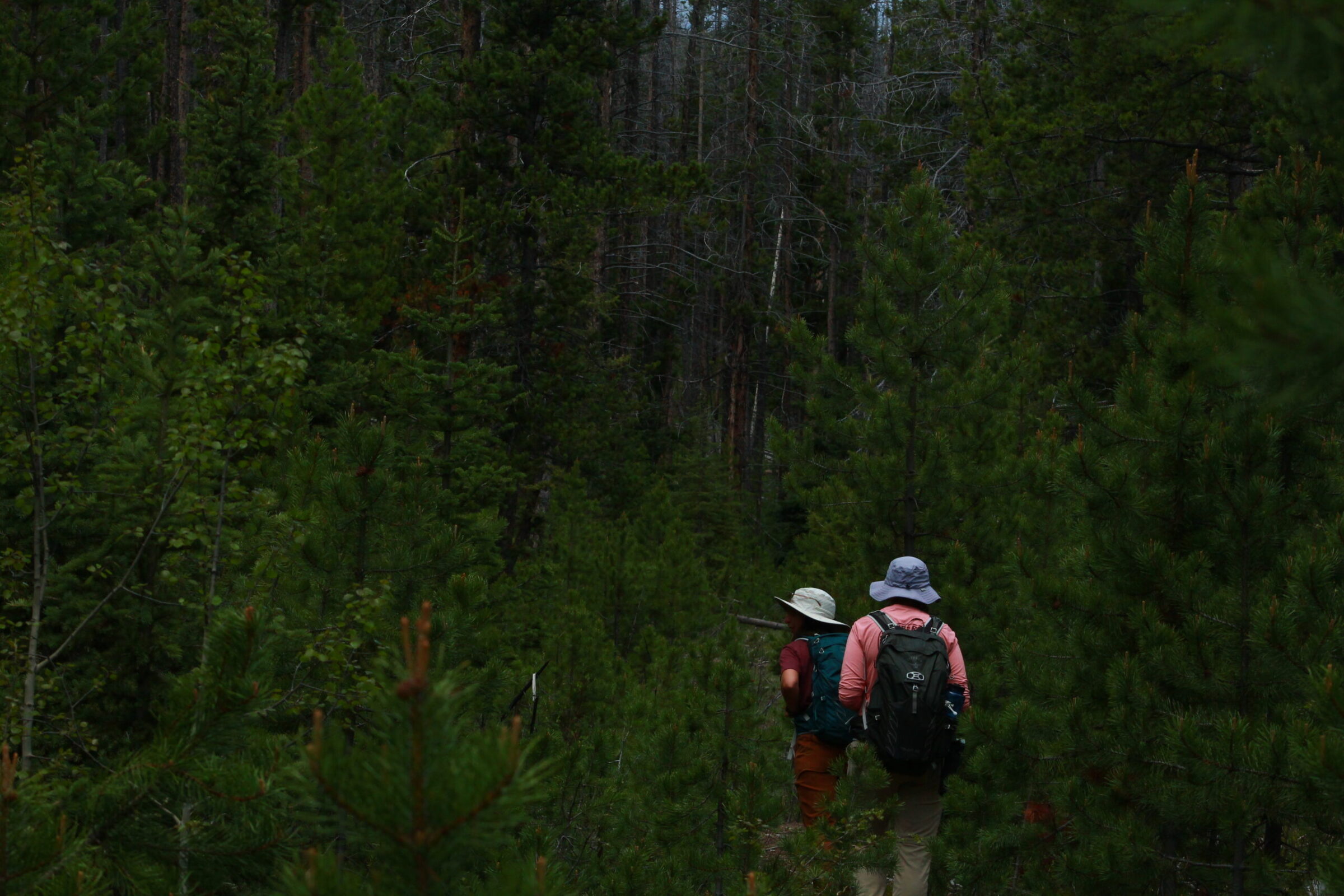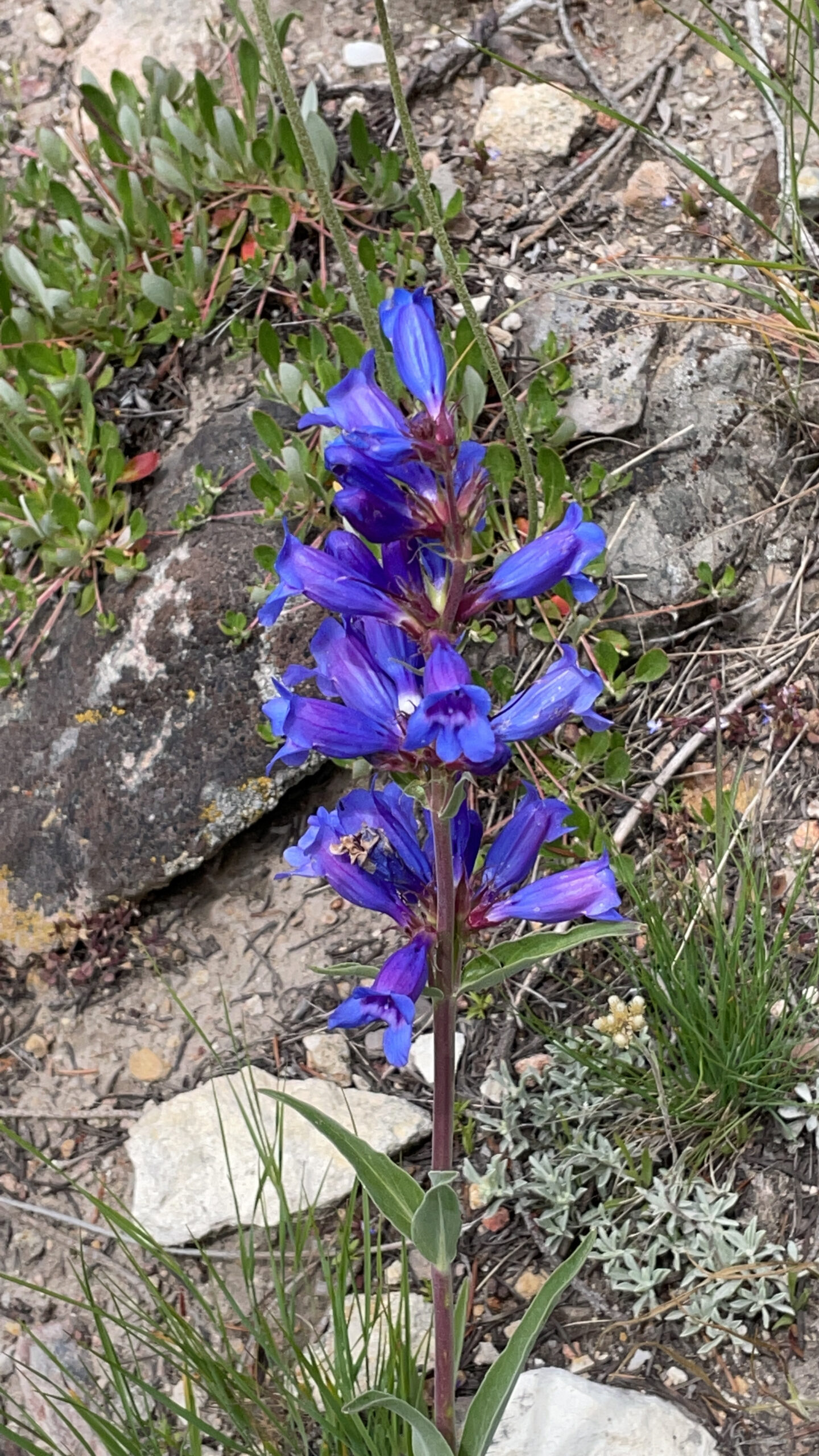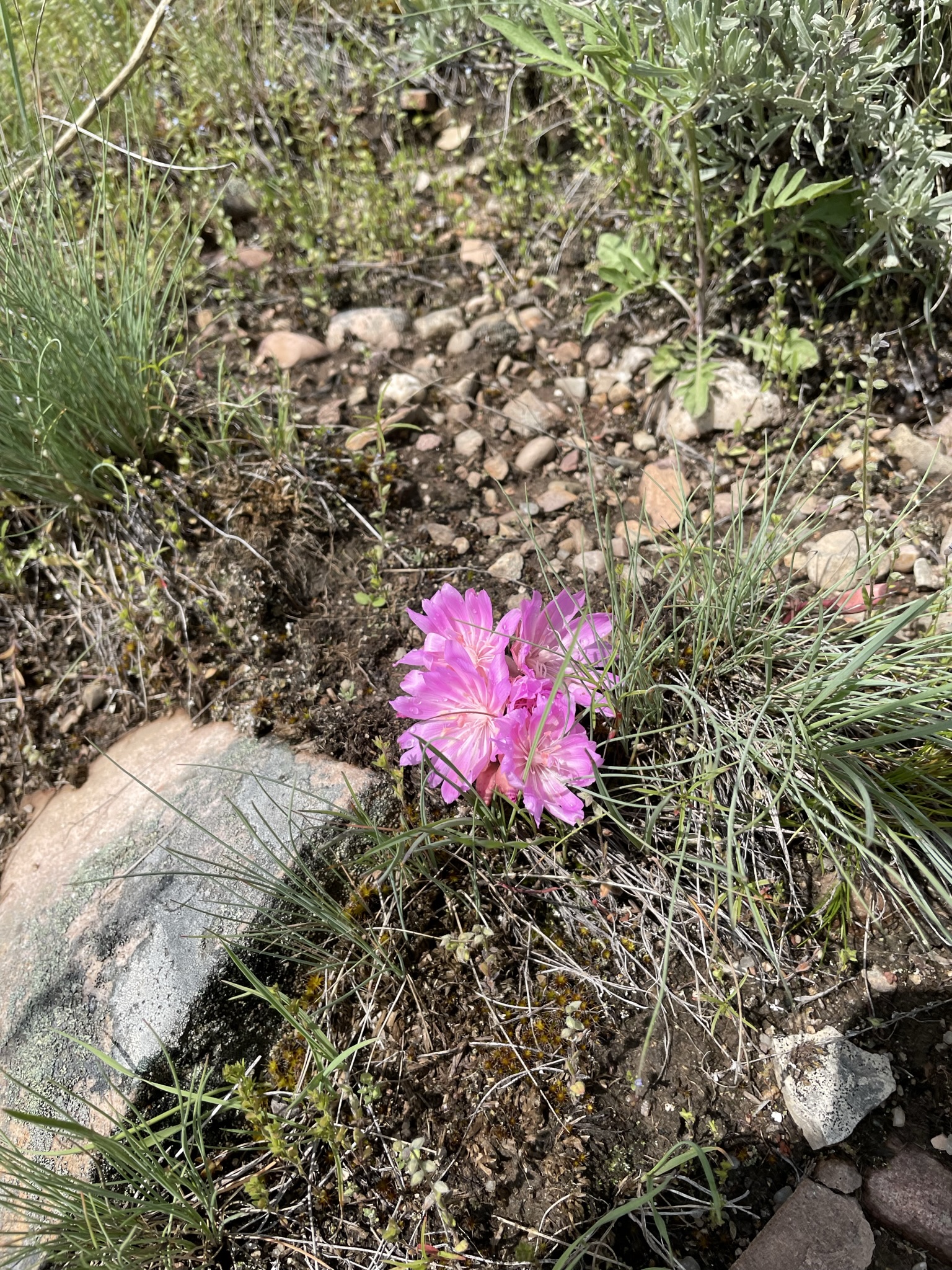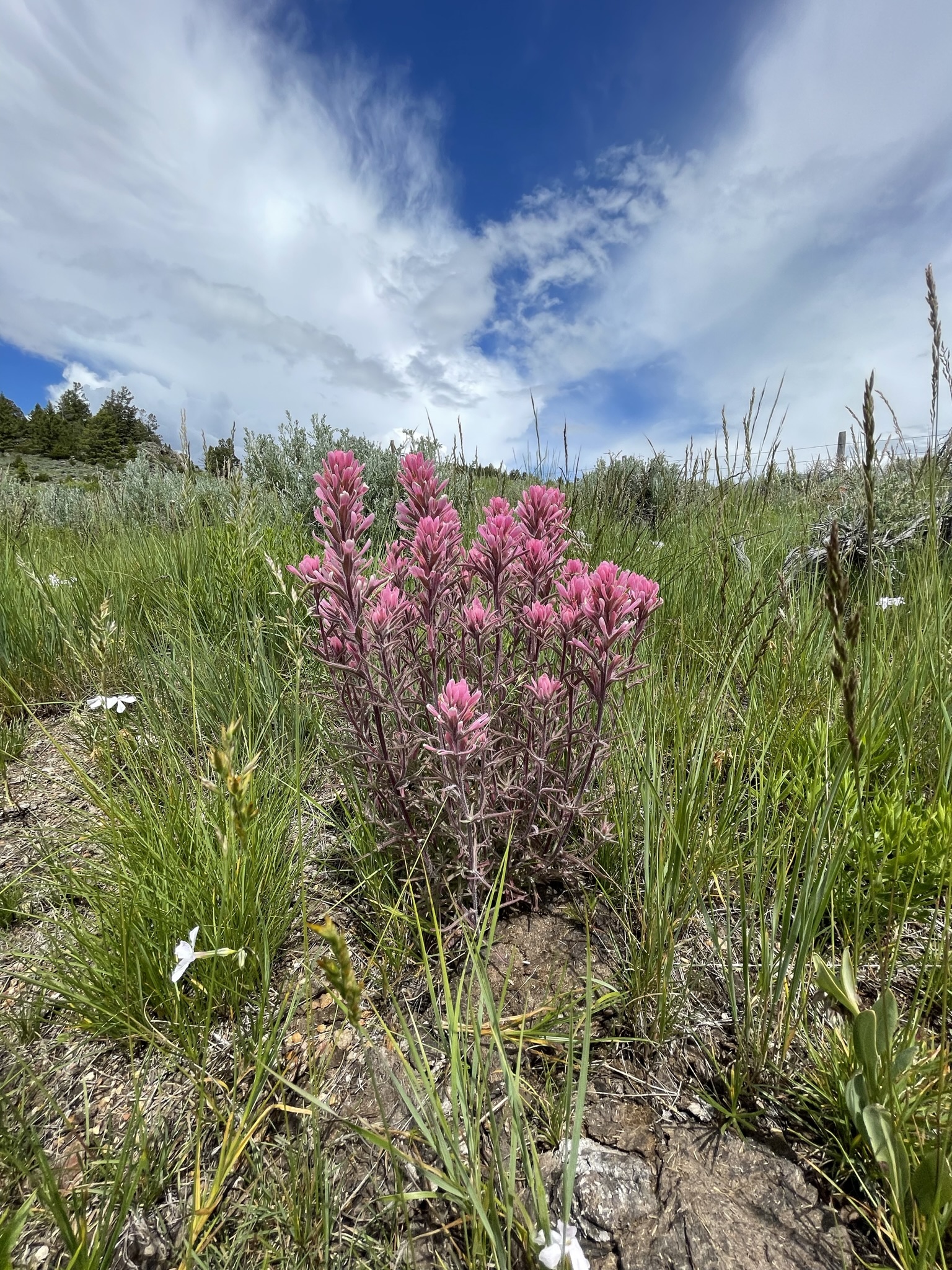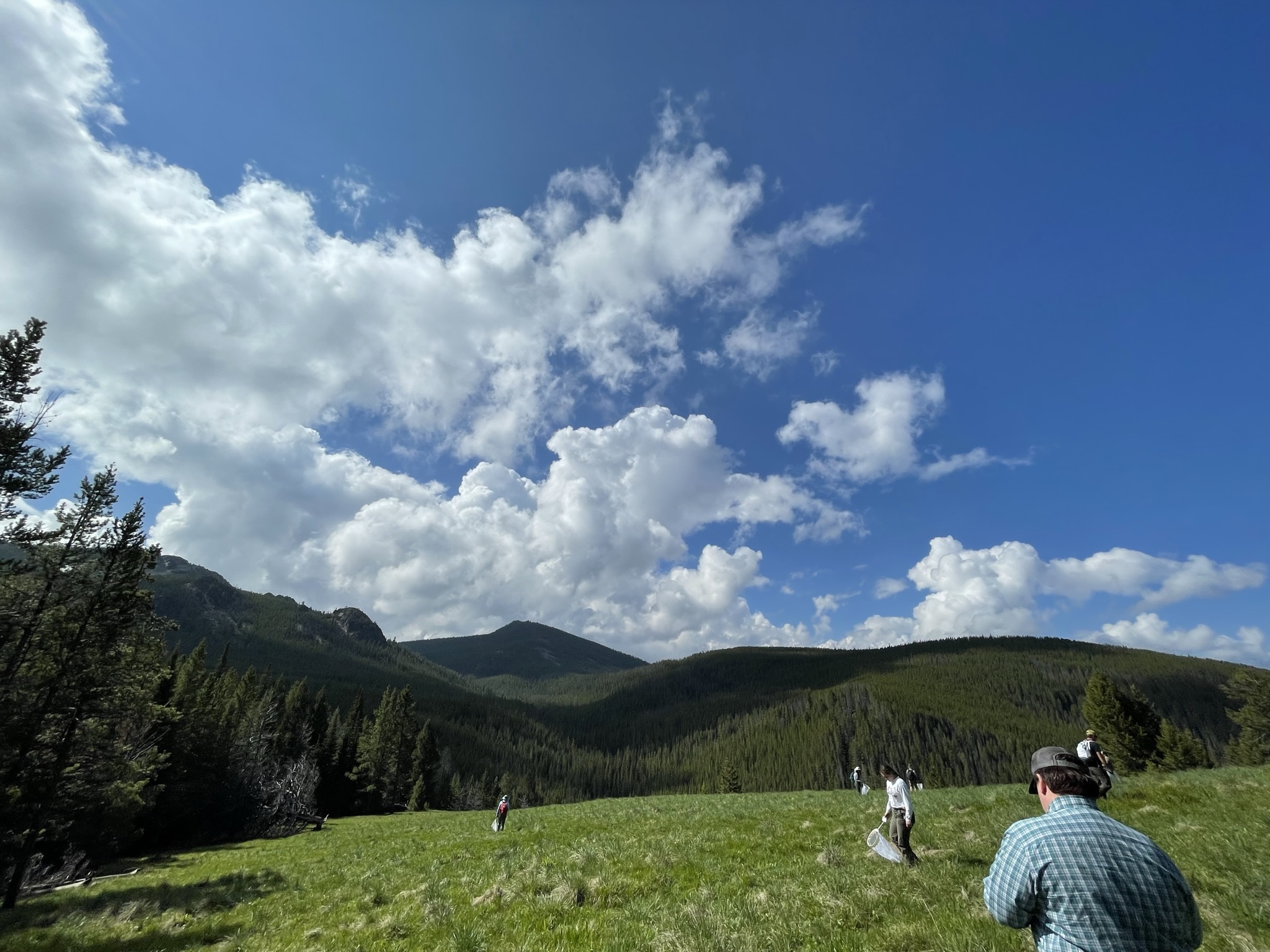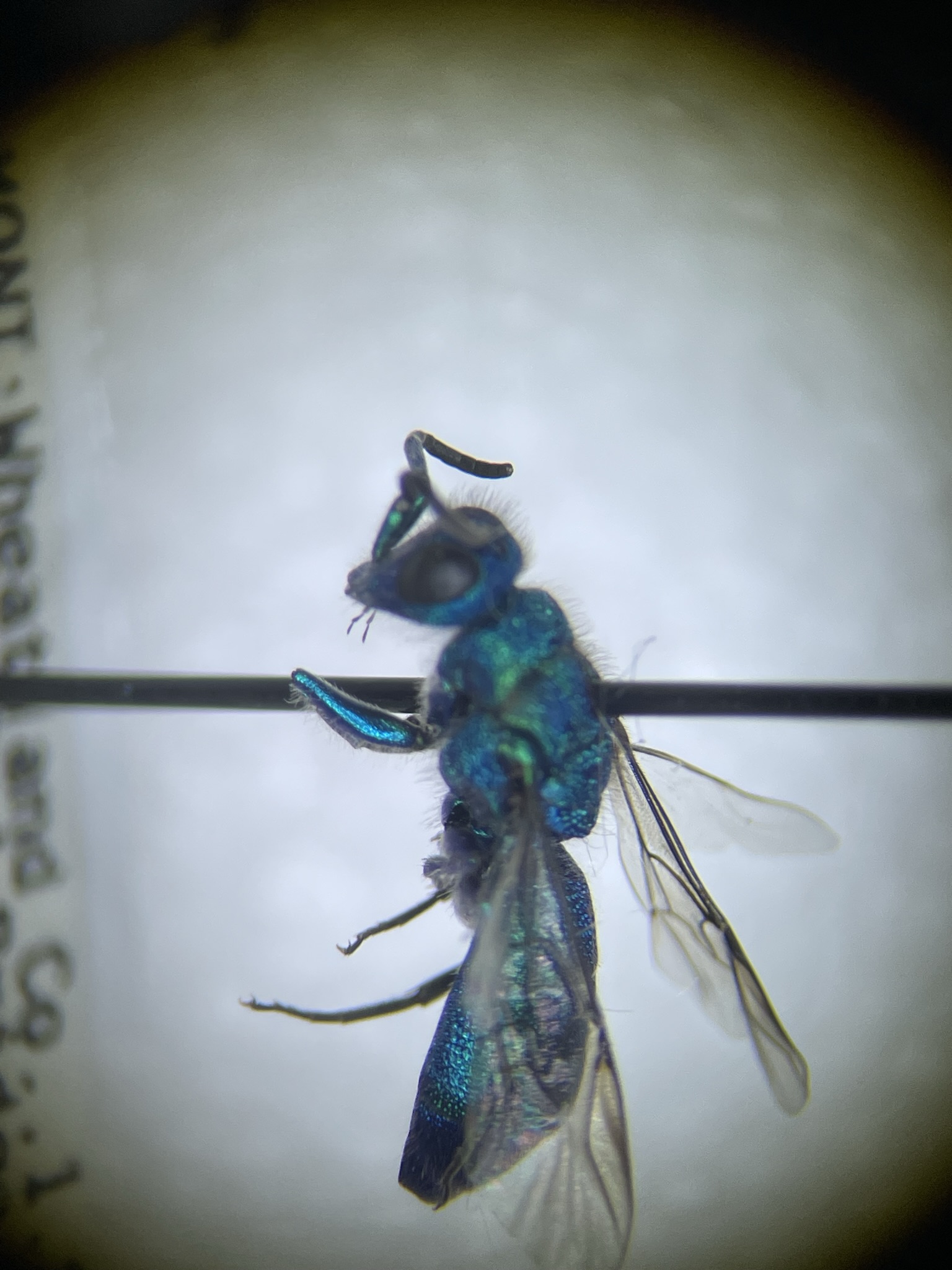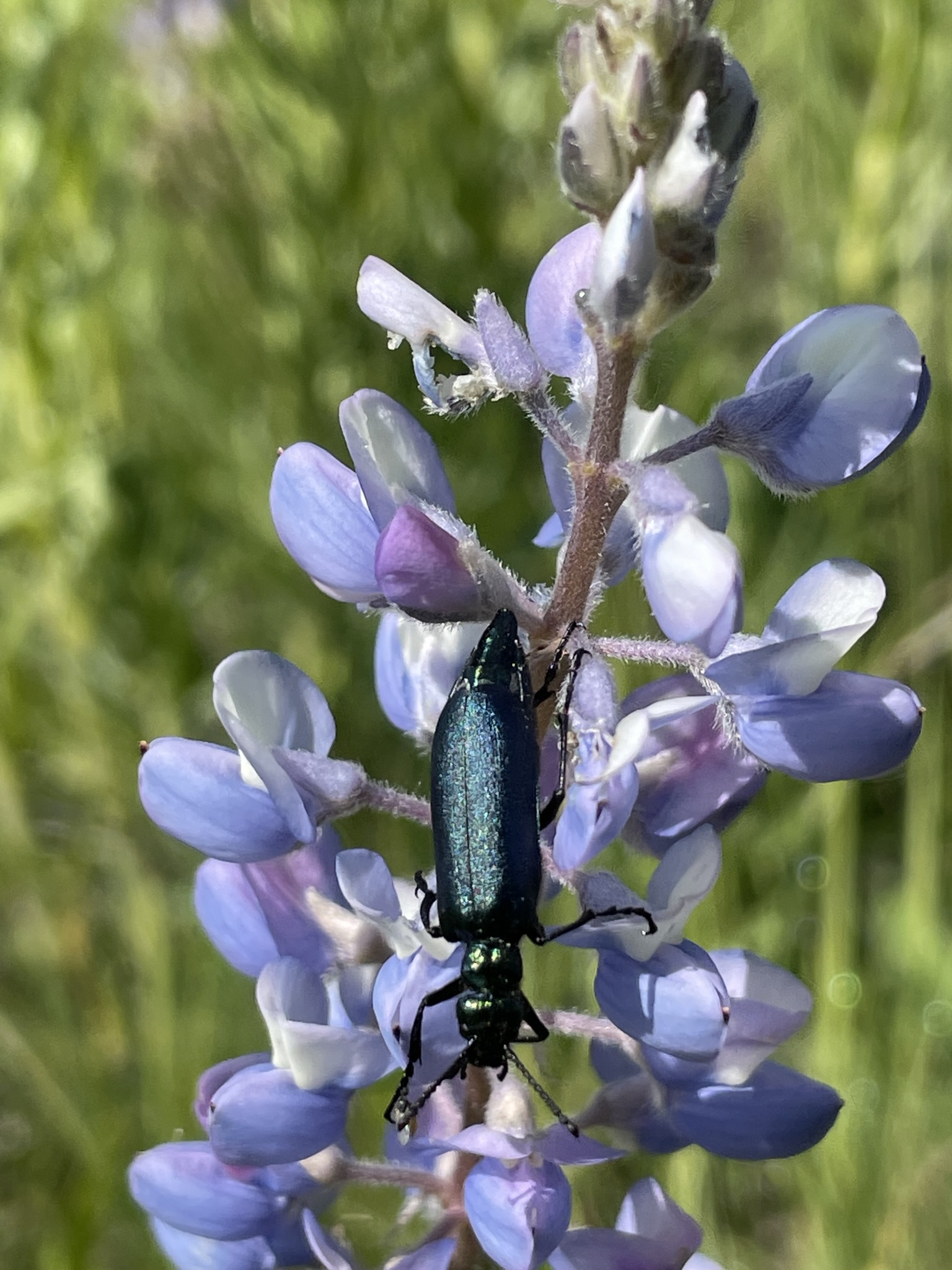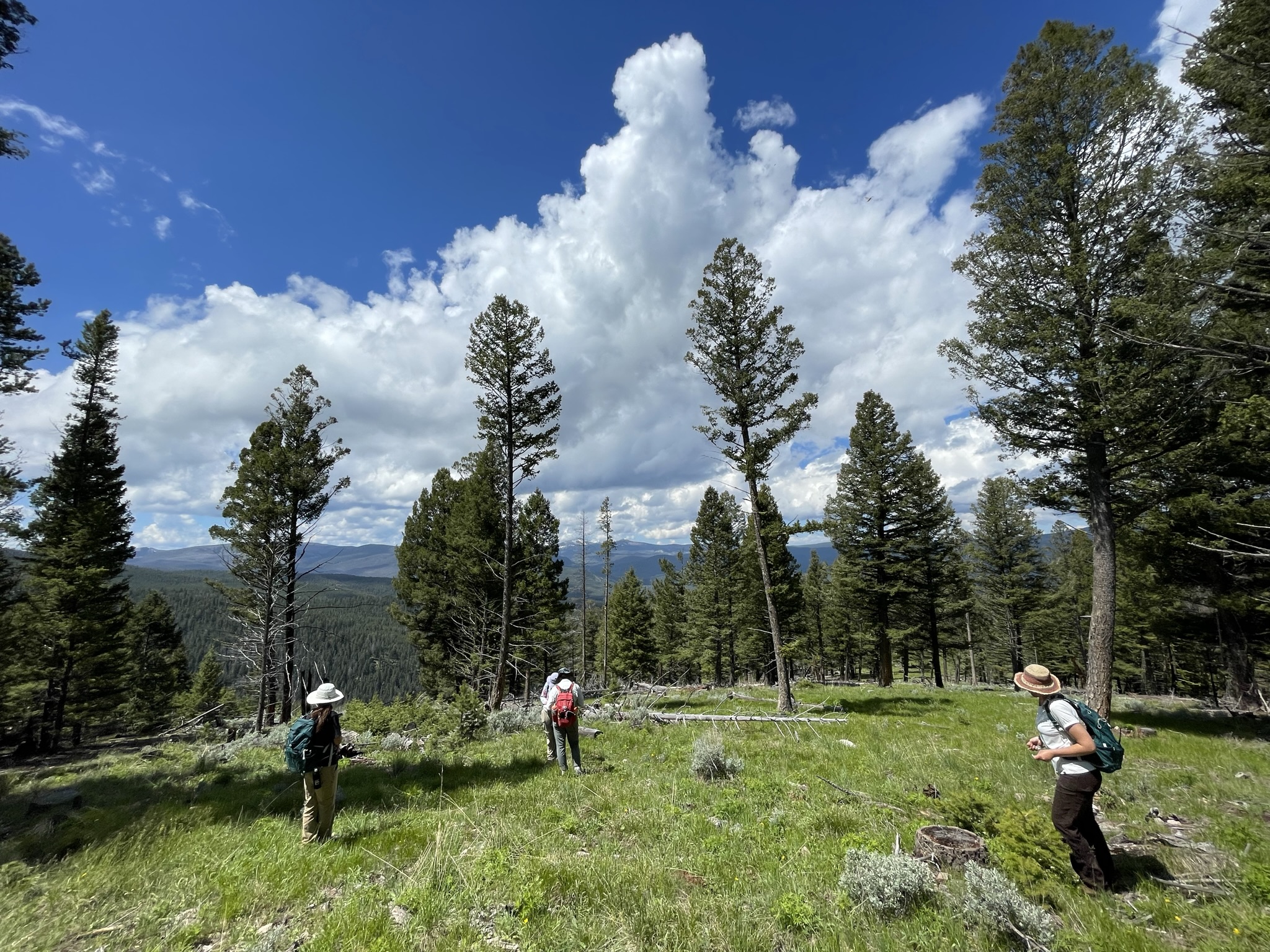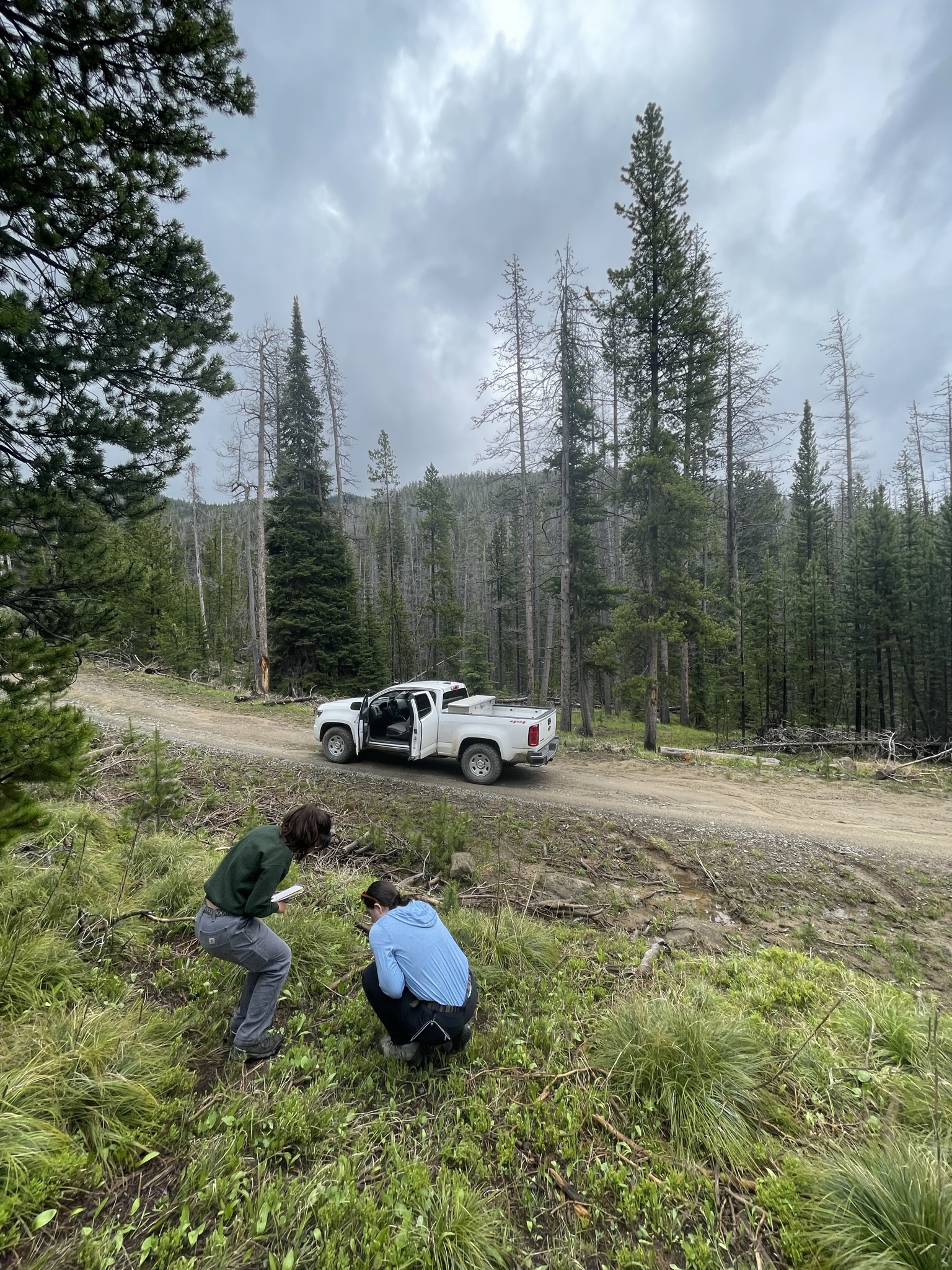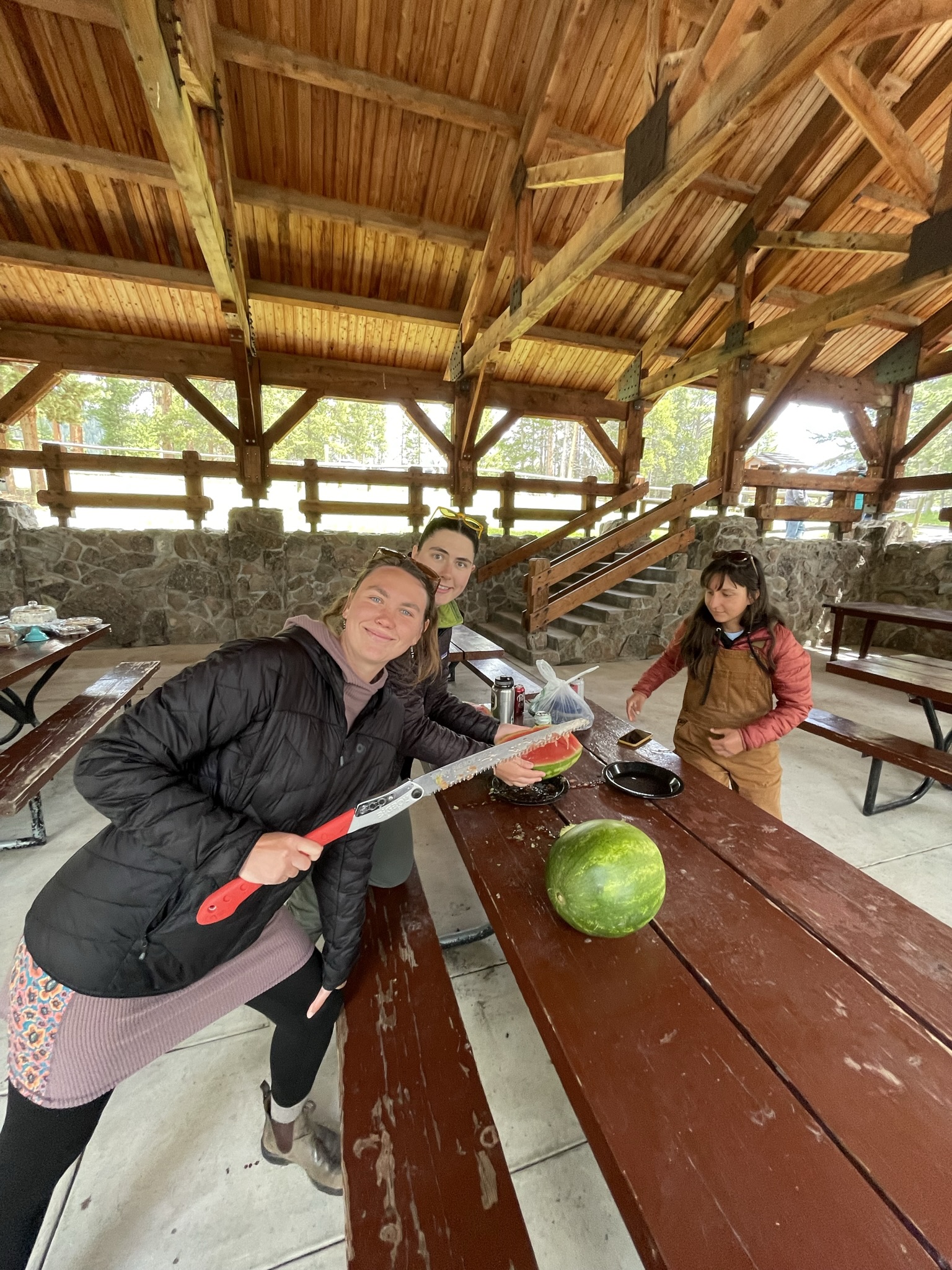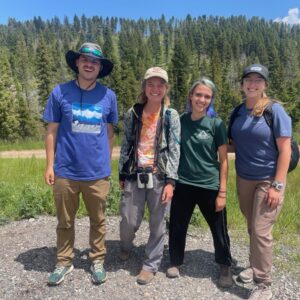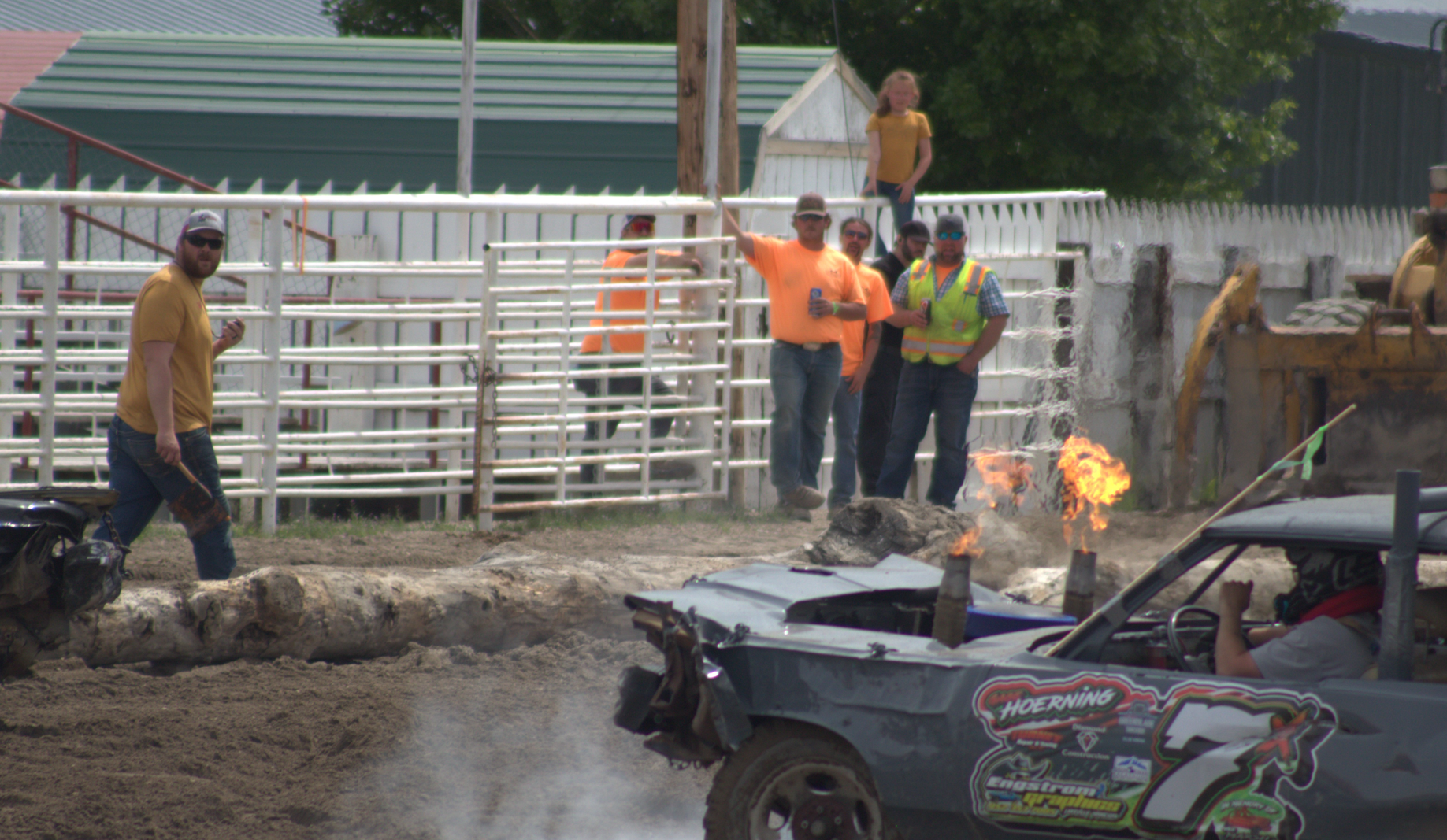With most of our seed populations hitting or nearing their harvest date, it has been extremely important to prioritize time efficiency during our daily routine. We have been camping weekly to reduce our overall travel time and on further trips we just backpack in.
This month we logged our most intense trek in yet, a daunting two-day and 16-mile trip with steep elevation. We had the Bitterroot team tag along as we hiked trough miles of post-burn forest, then up a mountain pass and back down to a beautiful lake on the other side. We made frequent stops to catch pollinators along the loop and were botanizing along the way.


It was great to have volunteers and Hiccup along for the trip because it was definitely a different vibe than going in a smaller group. It was a lively and fun experience to backpack into the wilderness with 10 other people!


After setting up camp, pinning our bees and making dinner, our group was treated to a beautiful sunset displayed on the face of a nearby mountain. Then, early the next morning, we continued catching bees and hiking the return route back to the trucks.
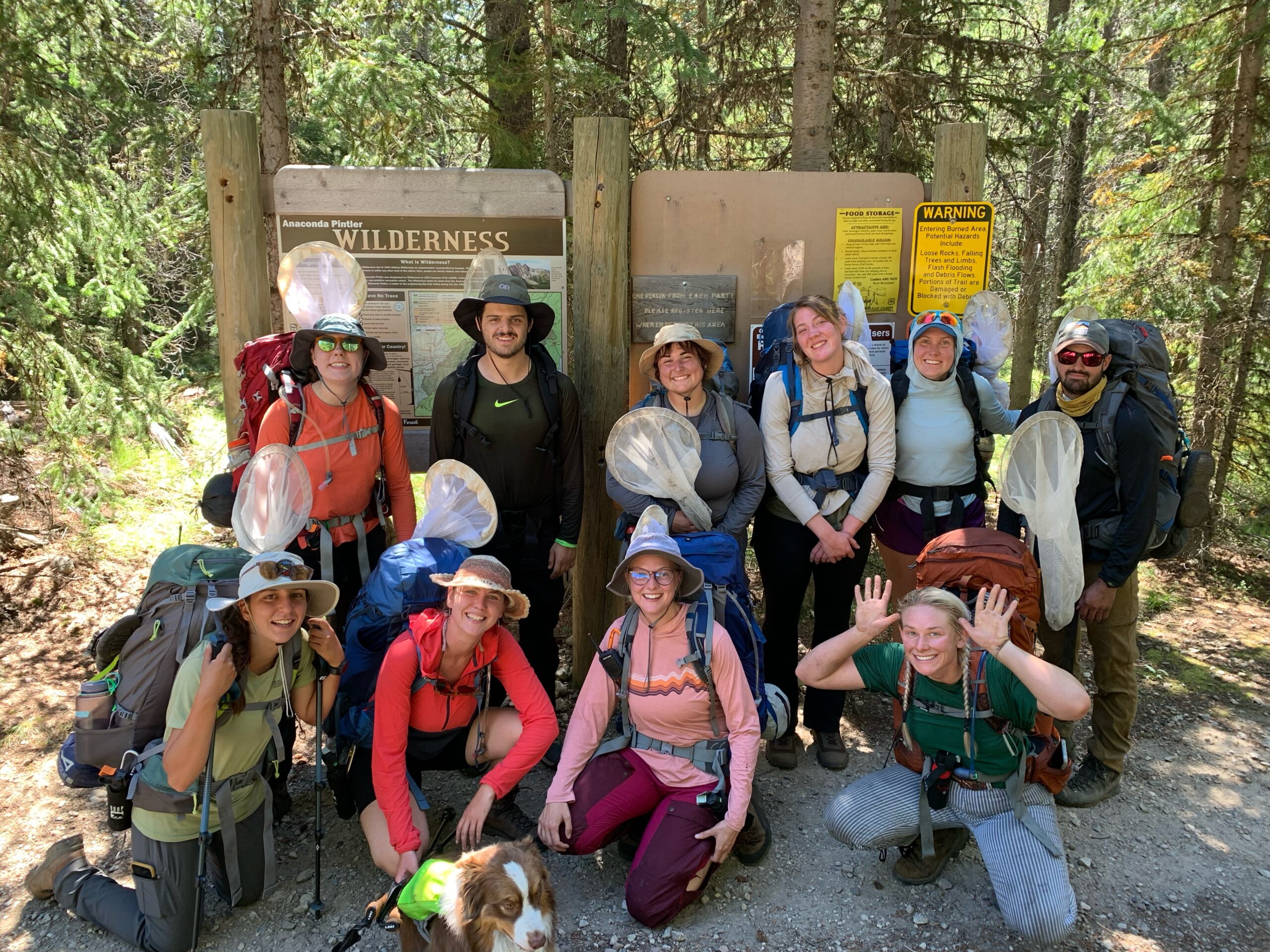
We were off running after the backpacking trip with thousands of seeds ready for harvest. The coming weeks were spent running between surveying wetland rare plant polygons, searching for white bark pine in pre-treatment areas, and marking/collecting seed populations. We try to rotate between areas daily when not camping, or weekly when camping, so we often are marking, monitoring, collecting and surveying for differently things as we come across potential populations. It is easy to distinguish potential habitats for species at interest in an area with such abrupt changes in features. Between wet meadows, lodgepole forest and steek scree deposits, we are spending less time locating the habitat, and more time surveying in the right spots.
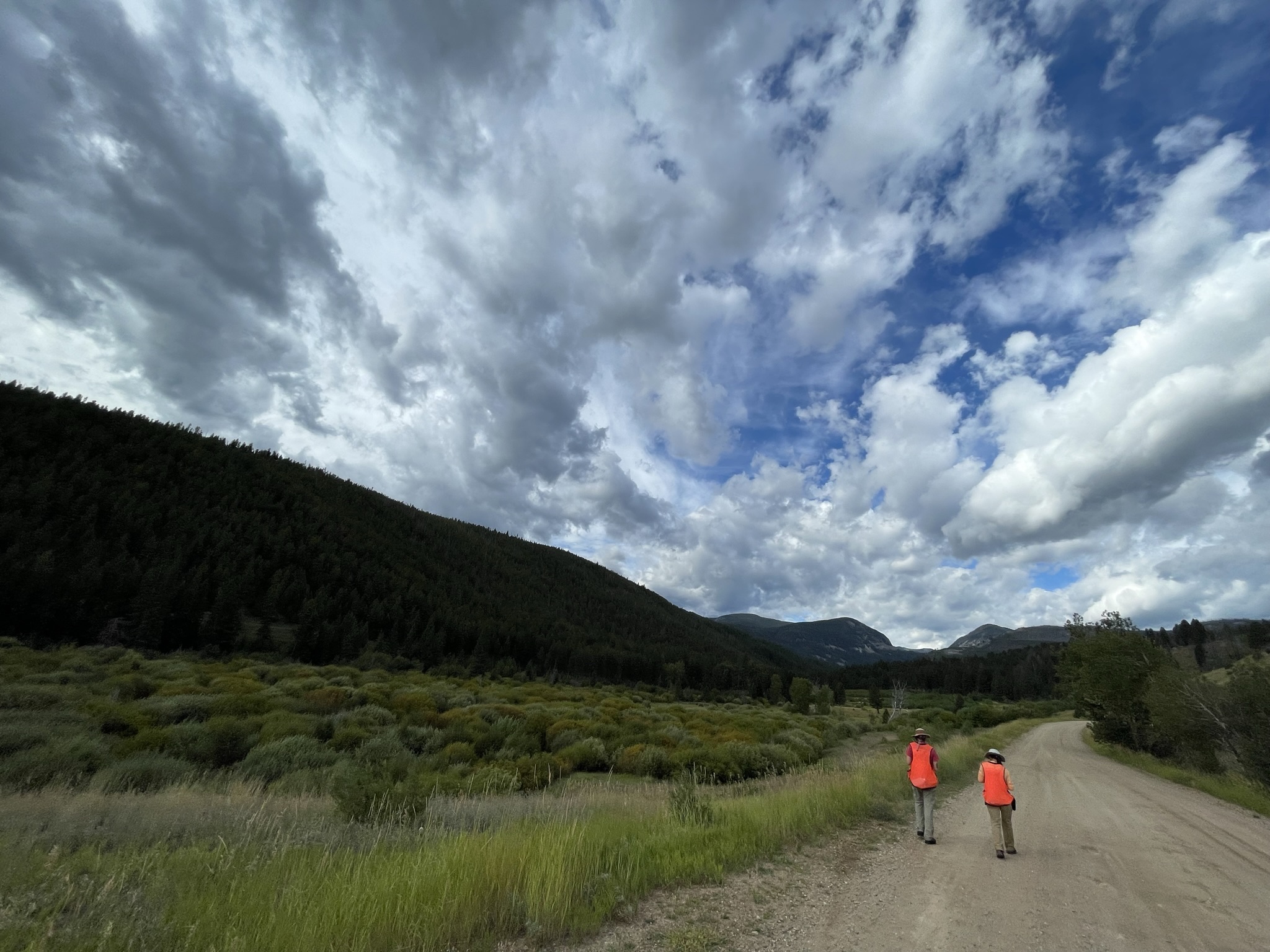

Crawling around in vegetation puts you eye-to-eye with some super unique insects! We have come across some interesting galls, moths and caterpillars while surveying. I think that entomology is an awesome way to break of the monotony of identifying/looking for the same plants over a long day.
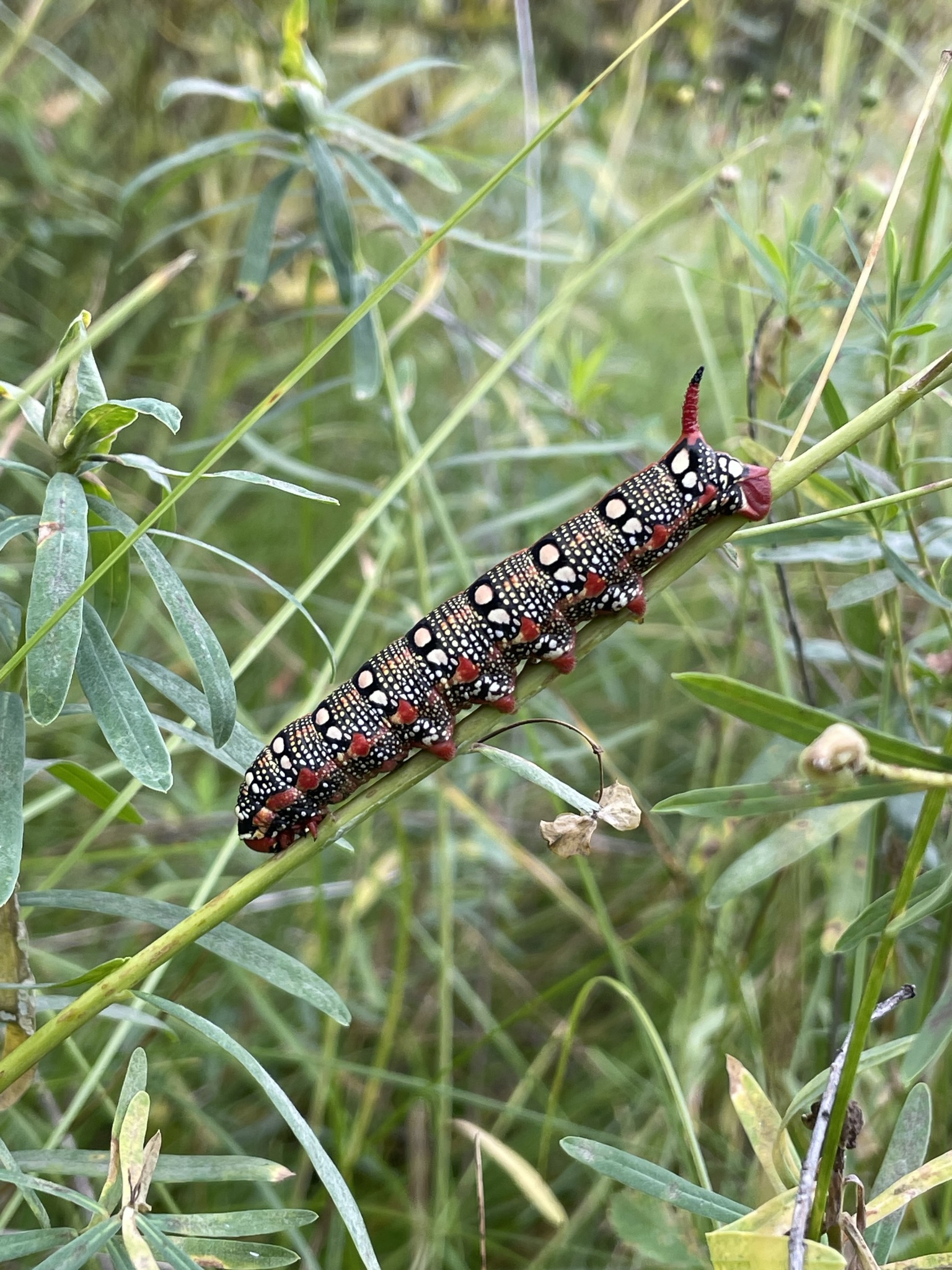

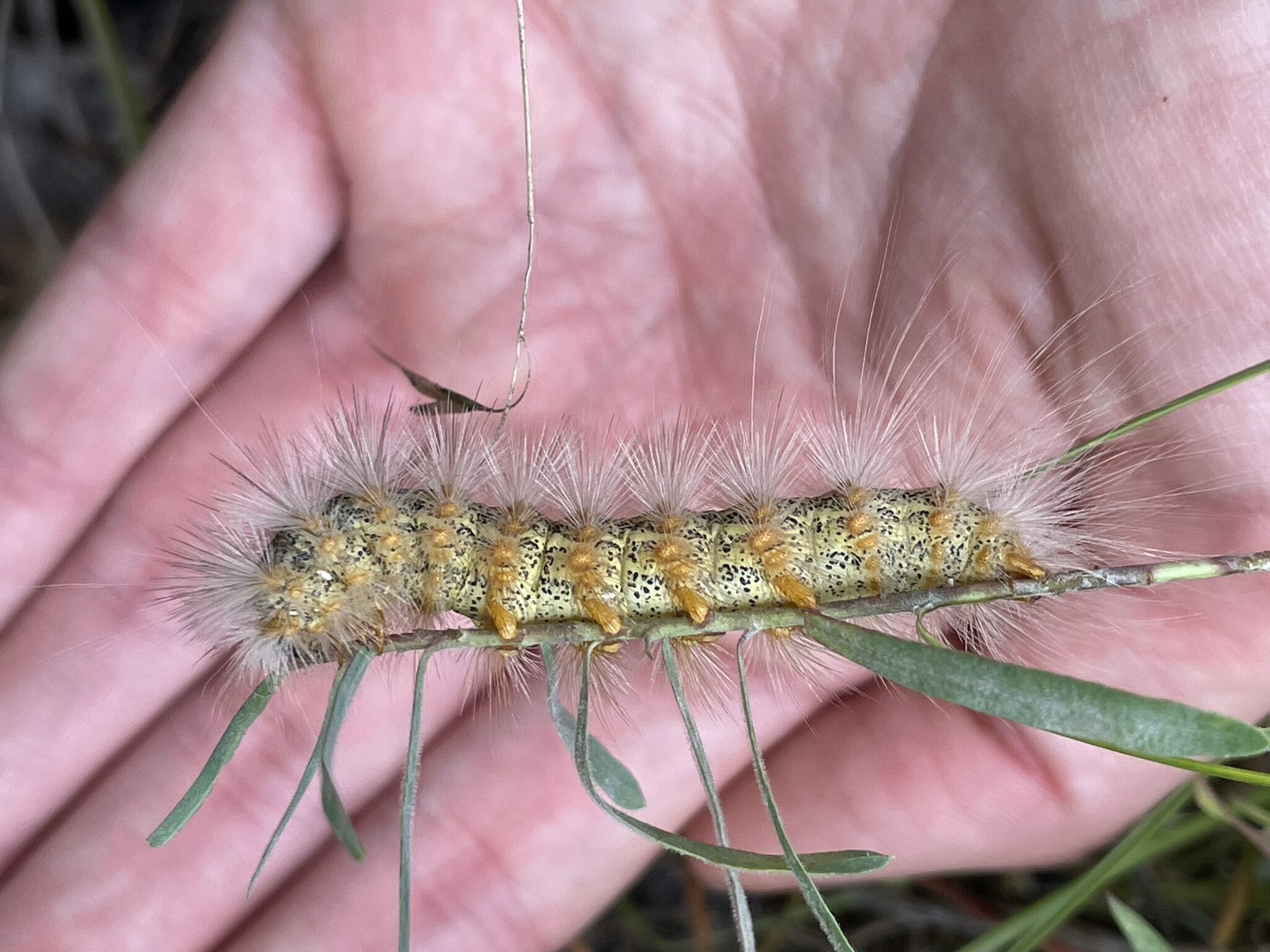
We utilized a few new techniques in some interesting studies this month. At the beginning of August, we deployed our first pollinator “vein traps” and we collected the jars this week. This trap uses yellow color to lure pollinators into its basin which is coated in a slippery substance. The collection is bagged and preserved in alcohol, then sent to Montana State University for identification.
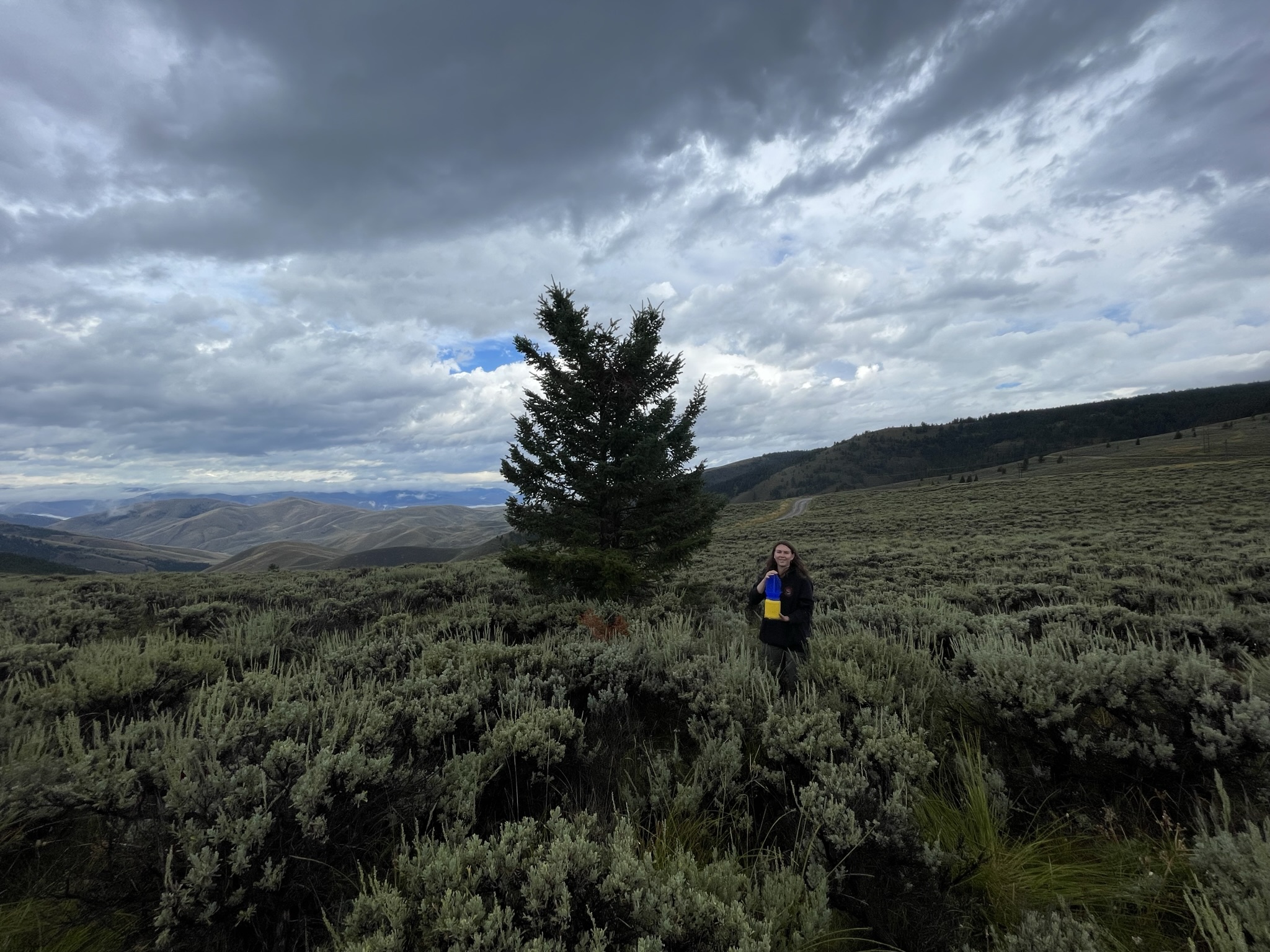
We also surveyed a biochar application and reseeding site. This area was a post-burned lodgepole forest with transects of different applications: Seeded with annuals, seeded with perennials, and treated with varying amounts of biochar. Our survey was the second revisit of a long-term study, and it was really interesting to see such stark differences between species in each transect. We used a pencil drop method to record plants at each interval and stood on a crate to use photo frames to estimate vegetation coverage per species.

This August culminated with seed collections on top of seed collections. Considering my limited amount of office time, it has been very hard to get much seed processing and electronic documenting done. Instead, we have been working to maximize our populations quantities and abundance. We are beginning to prepare our first seed shipment, but our daily priorities are much more urgent. So, our methods for now are: Collect, collect, collect and document all data! and we will deal with office hours once seeds are done for the season.

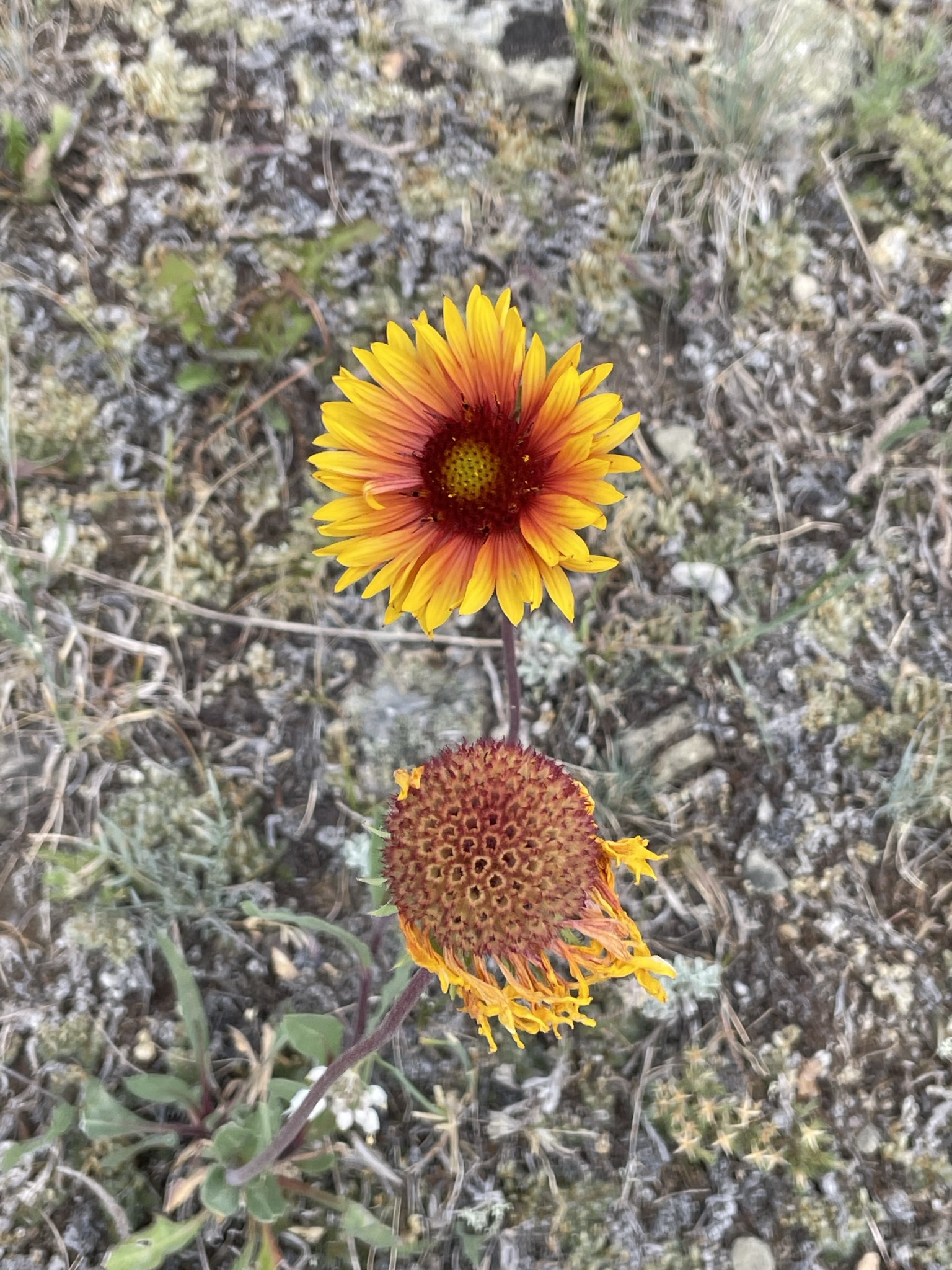
One of our sites had two large populations of Penstemon albertinus (Alberta Penstemon) and Heterotheca villosa (Hairy False Goldenaster). It was right next to some abandoned charcoal kilns and made for a long day of collection at one site. Last month was filled with grass seed collection, so it has been great to target other types of seed. Overall, we completed 6 quality collections between these two species.
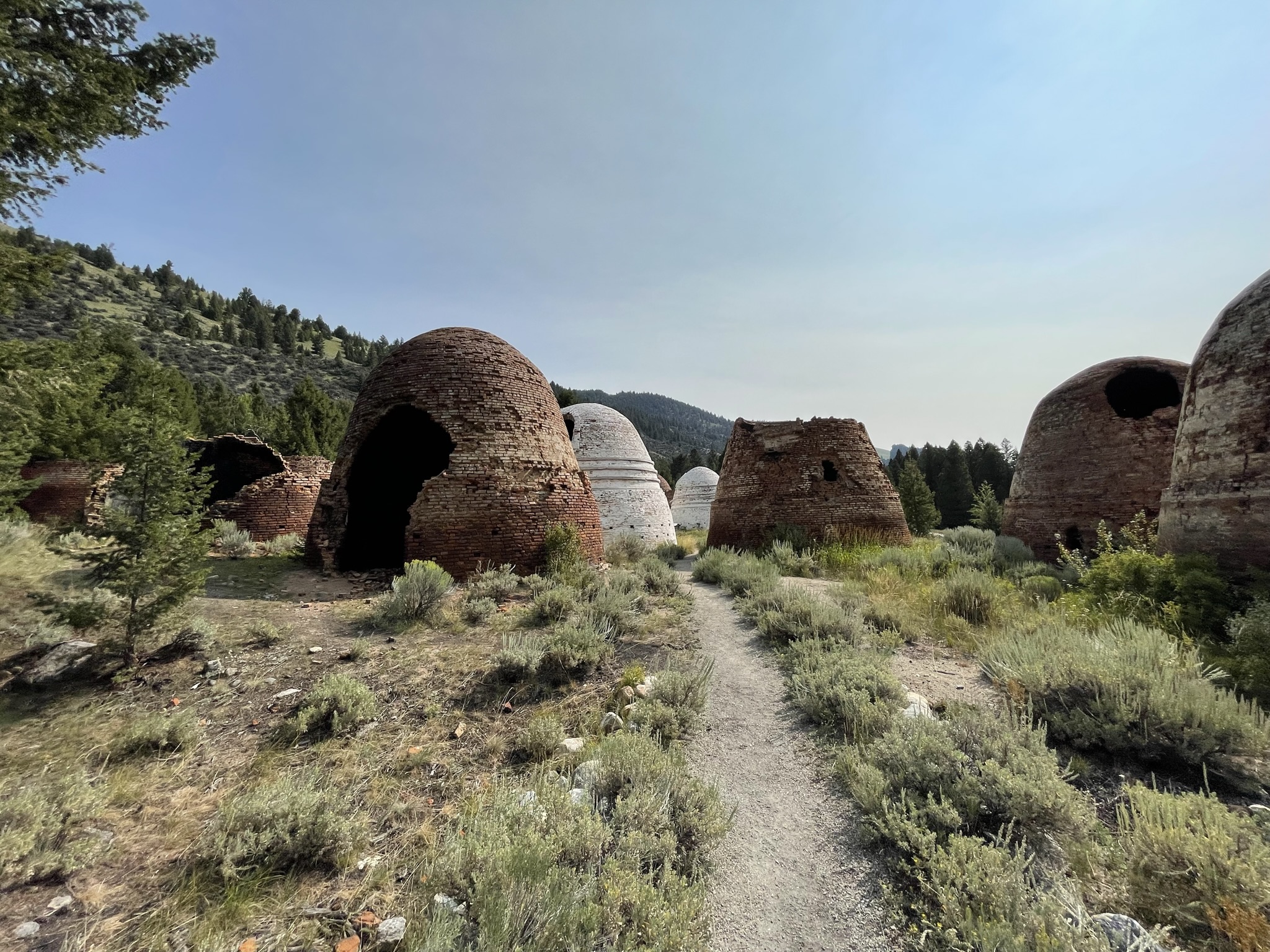
I try to make the most of my limited free time and squeezed in some great adventures during this month. Some highlights were watching the meteor shower from the top of Blue Mountain, backpacking in Glacier National Park, hiking to Storm lake, touring Lewis and Clark Caverns, digging in Crystal Park, and always… the great local hot springs!
